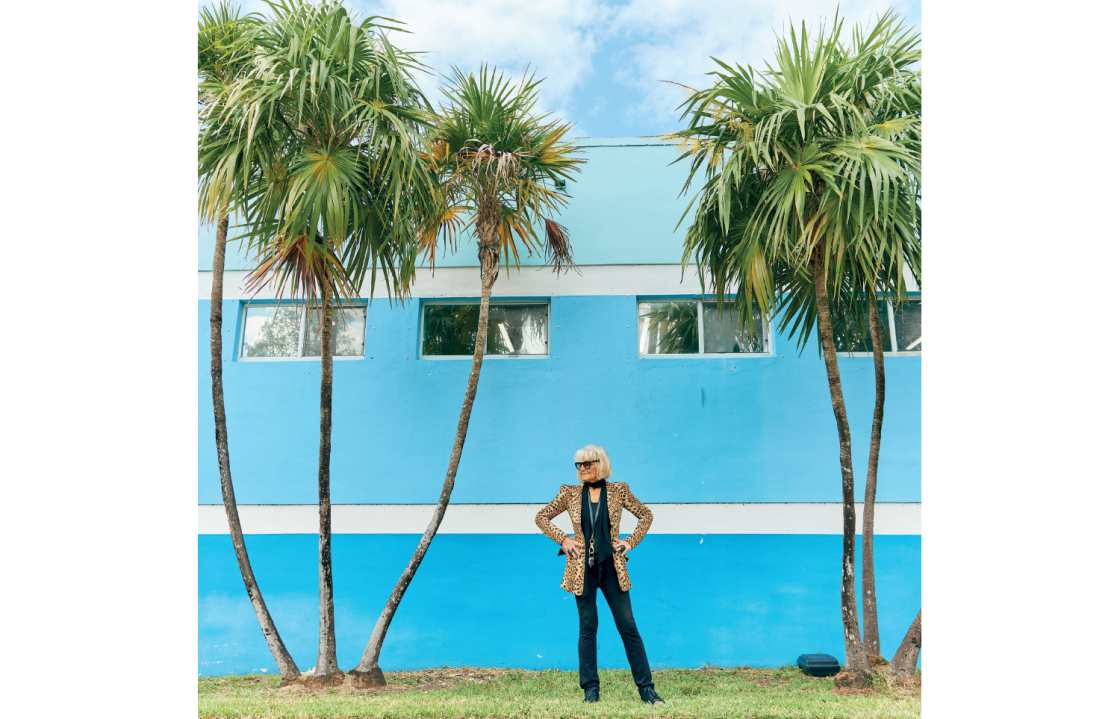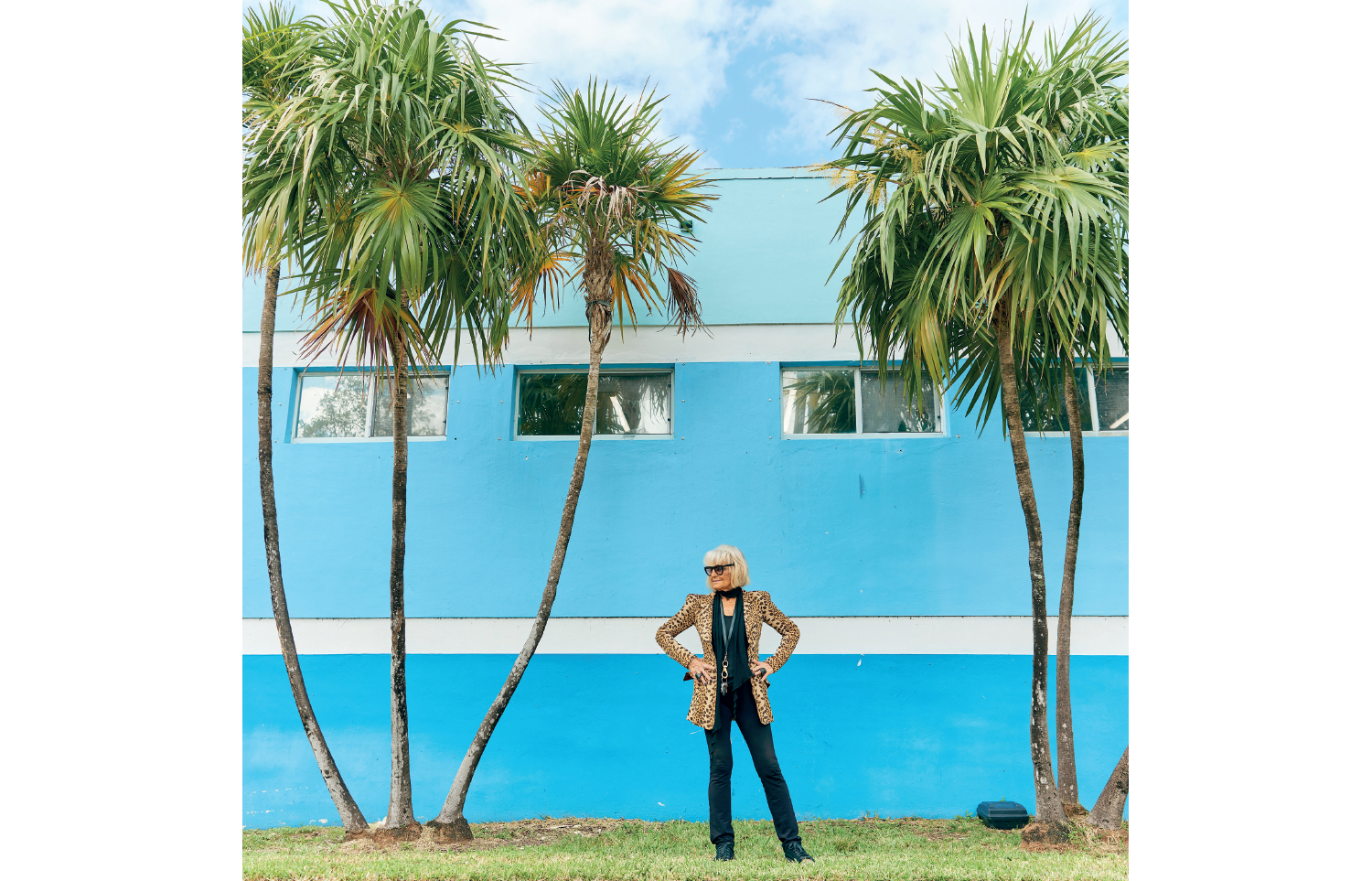‘I was one of your original customers in Kensington Church Street,’ I tell the founder of Biba when we meet. ‘Are you coming to complain?’ she shoots back. At 87 and fresh off a flight from Miami, Barbara Hulanicki is as sharp as a tack.
The designer was in London for the opening of The Biba Story, the Fashion and Textile Museum’s celebration of the revolution she accomplished in 1960s street fashion. Believe me, it was a revolution – I was there and yes, I remember. In fact I can summon a mental inventory of all the items of clothing I bought from Biba over its short life, from the lilac fit-and-flare mini-coat that was my first proud purchase in 1967 to the brown maxi-coat with the power shoulders and the shaggy fake-fur trim that was my last in 1972. In between there was the granny print mini-dress with the Peter Pan collar, the floor-length party frock with the black velvet-laced bodice and diagonally striped taffeta circle skirt, and the knee-high maroon canvas boots with the three-inch block heels – oh, those canvas boots! – worn with hot pants.
If Jane Fonda appeared in Klute in a tight-fitting matelot shirt, you’d find it on a shelf in Biba weeks later
What linked these diverse items was the cut. Having started as a fashion illustrator in the late 1950s, Hulanicki knew the importance of the silhouette. There was no signature Hulanicki style – her clothes were as likely to be inspired by Arthur Rackham as Audrey Hepburn – but all had tiny armholes for a skinny look: the first shops only stocked sizes eight to 12. She remembers petite French shoppers taking advantage of the exchange rate: ‘They used to come down in hordes from Portobello Road. They were fantastic’ – she draws a trim body shape in the air – ‘but the girls in England had fabulous long legs.’
Her ideal English model was Ingrid Boulting – ‘Ingrid was the perfect shape. The idea was that one was trying to get that shape on to people who weren’t that shape’ – but it was a French girl, Brigitte Bardot, who inspired her breakthrough design. She’d seen Bardot in a press photo ‘wearing pink gingham, very low cut, with boobies – you’re not allowed to say that now – and matching ballet pumps’. The ideal Biba girl didn’t have boobies but the look was just the ticket for the long hot summer of 1964, and when her gingham dress with matching headscarf – a snip at 25 shillings – was featured in the Daily Mirror, Hulanicki’s new mail order company was deluged with 70,000 orders and had to drain the country of supplies of gingham. That September she and husband Stephen ‘Fitz’ Fitz-Simon opened the first Biba boutique in a small former chemist’s shop in Abingdon Road, upgrading to a bigger grocer’s on Kensington Church Street 18 months later. The black and gold signage they copied from the undertaker opposite became the Biba livery, later enshrined in the Celtic knot logo that gave an art nouveau twist to the Biba label.
Art nouveau was in Hulanicki’s blood, but it was Eastern European rather than Celtic in origin. She learned to draw from her Polish father Witold, who ‘was always doing amazing watercolour illustrations like Alphonse Mucha’. The family had moved from Warsaw to Palestine soon after her birth when Witold was appointed Polish consul-general, and after the fall of Poland he stayed on to work for the British Mandate, a decision that may have cost him his life.
In 1948 he was assassinated by the Stern Gang. Hulanicki’s wealthy widowed Aunt Sophie took control, moving the family to her hometown of Hove. ‘Aunt Sophie was completely out of 1930s fashion, dressing in fabrics like crêpe de chine. I hated them, they all stuck to you. All we wanted at the time was 100 per cent cotton: Debbie Reynolds wearing a crinoline in the kitchen, making coffee in an amazing machine. All that fantastic colour, and happiness in the kitchen.’ When as a student at Brighton School of Art in 1955 Hulanicki won an Evening Standard competition for a beachwear design inspired by Hepburn, she told the paper: ‘I think we need more gay, teenage clothes. At my age we need comfortable and colourful clothes, don’t you think?’
Biba design was mercurial: the body shape never shifted, but the styles did. ‘The thing about a shop,’ she explains, ‘is that you can move, you can see what there’s an interest in.’ If Jane Fonda appeared in Klute in a tight-fitting scoop-necked matelot shirt, you’d find it on a shelf in Biba weeks later. I bought one. But over the label’s 11-year life there was a trend away from the youthful dolly bird look to the sophisticated woman in clingy fabrics. Aunt Sophie’s crêpe had crept up on Hulanicki, and shades of mauve, plum, rust, grey-green and purple – ‘Auntie’ colours – became the distinctive Biba palette. Together with the Biba silhouette – ‘as long as possible… like a drawing’ – they told a story that was new to post-war fashion.
Up to the 1950s the French were the rule-makers and the British rule-takers; by the 1960s we had become the rule-breakers. In 1955 Mary Quant opened her boutique, Bazaar, on the King’s Road, pioneering the youthful miniskirt for girls who had previously dressed as junior versions of their mothers. But the Quant look was chic and Parisienne at heart, the line crisp and sharp rather than serpentine. ‘Quant and Courrèges were doing futuristic stuff,’ says Hulanicki, while she turned to the past. This Polish-born designer steeped in art nouveau seized the fashion baton from the French by indulging a very British nostalgia for a temps perdu, and British fashion has never looked back.
It wasn’t just the clothes, it was the shops. ‘Biba’s of Kensington Church Street has style and originality,’ reported the Guardian in 1967. ‘The skirts are shorter, the lights are dimmer than anywhere else in London and the clothes cheaper.’ Blacked-out windows plunged the interior into a decadent gloom relieved only by the glint of red and gold wallpaper reflected in the art nouveau mirrors. Potted palms and bentwood Victorian hat stands dotted the black-and-white tiled floor: the clothes hung off the hat stands or were folded on the former grocer’s shelves. Brighton’s Evening Argus described the short-lived local branch of Biba as ‘like a cross between a jungle and a cavern’; in a photo in the exhibition the Church Street shop resembles a nightclub, with a store detective in shades looking just like Bill Wyman. Perhaps it was Bill Wyman. The shop assistants were all girls you’d want to be friends with; asking ‘Can I help you madam?’ was a sacking offence. The 15-year-old Anna Wintour started her fashion career as a Biba shop girl.
Short runs of 500 copies in any one fabric added a frisson of urgency to the shopping experience; if you found your size in the penumbra, you grabbed it. These limited editions were not ‘elitist’, they were due to problems sourcing the old-fashioned fabrics Hulanicki wanted. She struck lucky when the buyer for Pontings on the high street noticed her using a lot of art deco fabrics and invited her to visit his warehouse – an Aladdin’s cave of vintage designs – and when she complained to her Manchester textile suppliers, Burgess Ledward, of the difficulty of finding ‘Auntie’ fabrics: ‘They got an old man out of retirement.’ She was very persuasive.
All the clothes were made in England, initially in London’s Greek quarter. ‘Fitz used to have to go dancing with the owner on Saturdays to keep them in production.’ Compared with the grubby methods of today’s global rag trade, the Biba business model was exemplary: it was business, but it was personal. Hulanicki insisted on keeping prices affordable – ‘I didn’t want to make clothes for kept women’ – but not at the expense of quality. She’s shocked at the expansion of online fast fashion behemoths such as Shein: Biba clothes were cheap but never trashy. She’s gratified by their resale value on eBay: ‘Isn’t it great? £3 now worth £300. That’s not fast fashion.’
With success Biba inevitably expanded too, first into the former Cyril Lord carpet showroom on the high street in 1969, then into the vacant Derry & Toms department store in 1974. For Hulanicki the store’s art deco interior was a dream come true, though for me Big Biba – a one-stop lifestyle shop selling everything down to own-brand baked beans in black-and-gold livery – never had the allure of Church Street. Hulanicki had canned the Biba atmosphere and people went along just to soak it up. They didn’t always buy, and in 1975 the company ceased trading.
Sixties London would have swung without Biba, but less elegantly: the clothes combined fantasy with class. On May Day, 1970, the Angry Brigade planted a bomb in the High Street shop. Hulanicki found their reasoning ‘crazy’: ‘Women are slaves to fashion, Biba leads fashion, therefore blowing up Biba will liberate women.’ The bomb went off, but it didn’t change anything. We’re still fashion slaves, but to infinitely worse masters.
The Biba Story, 1964-1975 is at the Fashion and Textile Museum until 8 September.








Comments